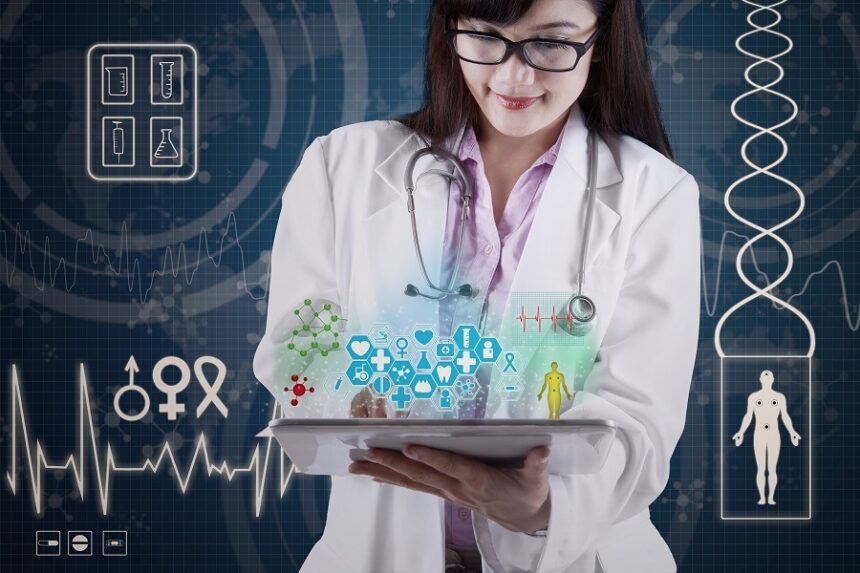These are exciting and consequential times for healthcare. Sentiments on the value of healthcare as a public institution are shifting. New technologies are improving patient outcomes, making our health data more useful and sparking innovations in drug research and the development of new health devices.
The focus is squarely on the patient in probably 90 percent of our conversations about health technology, but there?s another big piece to how technology empowers the healthcare industry. It?s all about the employees doing the hard, rewarding and crucial work in our hospitals, clinics and doctors? offices.
Better Employee Engagement
The lack of employee engagement within the larger healthcare landscape has been the subject of several recent studies, one of which found that the healthcare industry ranked dead last, among 17 industries, for employee engagement with their roles.
In case it needs to be stated, these are literally dangerous statistics. What?s hanging in the balance is the well-being, and even the likelihood of survival, of men and women who need compassion and timely attention during some of the worst chapters of their lives.
Failure like this at the cultural level may be attributed to two things. The first is decades of wage stagnation for workers of all kinds, coupled with the outsized financial burden of a wasteful private insurance apparatus. The second is the fact that healthcare has lagged behind other industries in the adoption of modern technologies that stand a chance of streamlining daily workflows and eliminating common sources of frustration.
In addition to broadly bringing better engagement to the healthcare community, what are the other, more specific ways that technology benefits employees?
Better Communication With Staff and Patients (Including in Emergencies)
Healthcare technology impacts employee engagement
by empowering workers to do their jobs more effectively and helping them engage more easily with their work, including hospital or clinic administration systems. But healthcare technology also helps employees engage more effectively with each other in the following ways:
- Voice- and video-based communication makes it easy for doctors to check in with patients as well as with staff, even when distance separates them.
- Hospitals can deploy location-based technologies to manage which staff members receive various kinds of alarms and notifications, ensuring a nearby and qualified employee is alerted to emergencies in progress.
- The regulatory landscape, including HIPAA, has become more complex in recent years where patient privacy and data stewardship are concerned. Hospital employees don?t want to have to worry about which kinds of information can be transmitted within compliance and which cannot. Unified, secure and compliant healthcare communication systems take the guesswork out of communicating safely about patient cases.
- Between 2002 and 2013, according to OSHA data, workplace violence was four times more common in healthcare than in any other industry. In any number of emergencies, such as patients becoming violent or an intruder threatening harm, the ability to communicate instantly with any other party in the building is absolutely critical.
More seamless and timely communication has been the driving force behind many technological breakthroughs, and it turns out that healthcare is no different.
Better Ongoing Learning and a Brighter Future for the Whole Industry
Education is a crucial branch of healthcare technology worth looking at. The life of the average healthcare employee is busy and packed with responsibilities, which means it can be a challenge to pursue certifications, accreditations and otherwise advance one?s career once they?ve made their start.
Just as it?s done elsewhere, distance learning in healthcare means employees don?t have to take time away from work or greatly reconfigure their schedules to pursue additional certificates in specialized fields of medicine or more lucrative roles and advancement opportunities.
Better-Managed Healthcare Facilities
The internet of things, and soon 5G connectivity, will bring considerable changes to a broad variety of technologies and industries. In the healthcare industry, some of the advantages will look familiar while others will feel a bit more novel.
Hospitals and other facilities can house a wide variety of patients in a number of different stages of recovery ? and they contain labs, storage facilities and more, each of which has unique requirements for lighting levels, temperature control, air circulation, and purification, among many other factors. Homeowners know saving energy and managing multiple ?climate zones? in a single-family home is a handful ? so multiply that challenge by many hundreds of patient rooms and employee-only areas in an average hospital, and you begin to see the full picture.
The IoT provides health facility administrators and maintenance staff with the tools required to personalize and automate HVAC functionality and lighting depending on room occupancy. Smarter, LAN-connected infrastructure and equipment can also alert staff when parts need to be replaced, when a piece of equipment is due for replacement or when an unauthorized party moves or removes a hospital asset.
Better Visibility Thanks to AR and VR
Augmented reality (AR) and virtual reality (VR) aren?t quite the ?Holodecks? we were promised, but they?re getting there. AR devices like Google Glass are gaining traction, even in smaller practices, by placing important patient data right in the doctors? peripheral vision during patient consultations. This ?heads-up display? (HUD) ensures that no vital data point goes overlooked and helps both parties get, and stay, on the same page.
Other applications of augmented and virtual reality are even more consequential. Google Glass as well as Microsoft?s HoloLens, even today, provide a way for surgeons to plan complex surgeries in greater detail. Such devices may even be worn by the surgeon during a procedure and help achieve the best possible outcome by overlaying a digital representation of the patient?s anatomy, including the pathways used by vital organs and blood vessels. From the surgeon’s perspective, this view lends a level of confidence and surefootedness that just wasn’t available before.
All of these improvements to the fabric of our healthcare system are thanks to the keen minds that refine all of our digital tools over time. For every coder and engineer rethinking healthcare technology ? we thank you.






